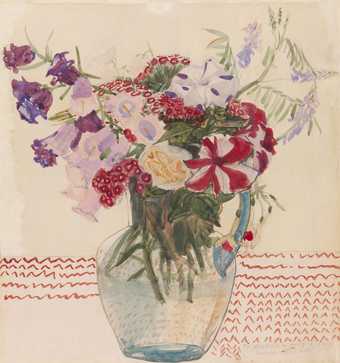
Ursula Tyrwhitt
Flowers (1912)
Tate
Nothing says brighter days like flowers in bloom. Let’s look at five artworks that will surely put a spring in your step.
Celebrate spring with these floral-focused paintings

Ursula Tyrwhitt
Flowers (1912)
Tate
Nothing says brighter days like flowers in bloom. Let’s look at five artworks that will surely put a spring in your step.
Following his experiences as a soldier in the trenches, painter David Bomberg's work was rejected by the War Artists' Advisory Committee (where artists are commissioned through an official scheme to record war events). From 1939 to 1944, he applied for more than 300 teaching jobs, hoping to find one that appreciated his artistic style, but he was unsuccessful each time.
To distract him, his wife suggested he paint flowers. Surrounded by war-ravaged London, he painted a series of vibrant floral canvases celebrating the beauty of flowers bursting from their vases. A reviewer aptly described them as ‘explosions in oil colours.'
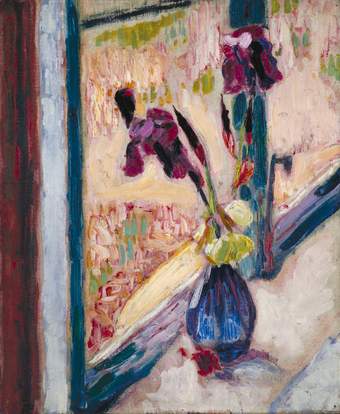
Image released under Creative Commons CC BY-NC-ND 4.0 DEED
One of the most striking spring flowers, the iris always attracts the eye with its spear-like blooms and kaleidoscope of colours. Irish artist Roderic O’Conor’s alluring Iris (?1913) depicts the flower in its prime, bathed in sunlight, standing proudly in a vase.
Often, iris leaves can remain even after petals have bloomed, clinging to the spring season. A reminder that, like O’Conor’s painting, there’s so much beauty to be seen long after brighter days pass.
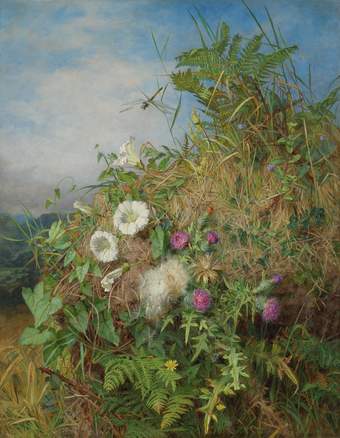
Martha Darley Mutrie
Wild Flowers at the Corner of a Cornfield (c.1855–60)
Tate
Wildflowers, grass mixed with thistles, cornflowers, celandine flowers, brambles, ivy and weeds growing on a bank near a cornfield. Overhead, a male Emperor dragonfly happily flies in the sky. A leading flower painter in Britain in the 19th century, Martha Darley Mutrie’s Wild Flowers at the Corner of a Cornfield (c.1855–60) perfectly captures a spring scene.
She trained with her sister, painter Annie Feray Mutrie at the Manchester School of Design and they both gained critical praise exhibiting floral works. Their success as working women artists was rare at a time when men dominated painting.
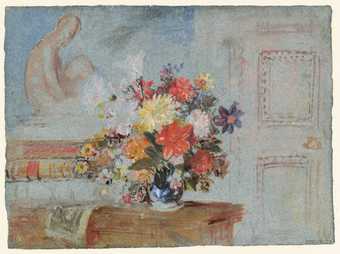
Joseph Mallord William Turner
Petworth House: The Old Library, with a Vase of Lilies, Dahlias and Other Flowers (1827)
Tate
In The Old Library: A Vase of Lilies, Dahlias and Other Flowers (1827) JMW Turner swiftly and vividly paints a vase overflowing with colourful flowers. It's believed the arrangement was also a prop used in his portrait 'Mrs. Hasler as Flora’ – it looks identical.
This watercolour is rare for Turner as he didn’t often paint still life, especially of flowers. No other floral sketches or drawings were found left behind in his studio.
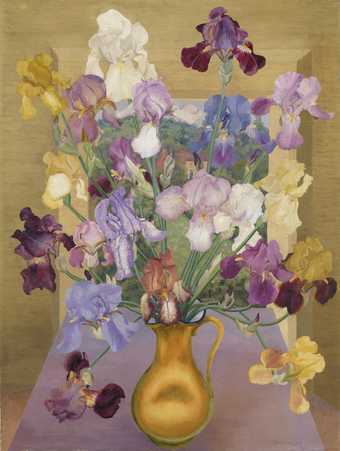
Sir Cedric Morris, Bt
Iris Seedlings (1943)
Tate
Before WWII, Cedric Morris was well-known both as a painter and a gardener, responsible for growing his own award-winning irises. He grew about 1,000 new iris seedlings every year. The iris, he said, was a flower of 'elegance, pride and delicacy.'
In 1940 he moved to Benton End in Suffolk, where he grew a garden inspired by Claude Monet's at Giverny. He painted Iris Seedlings in 1943 using the beautiful flowers from his own crop.